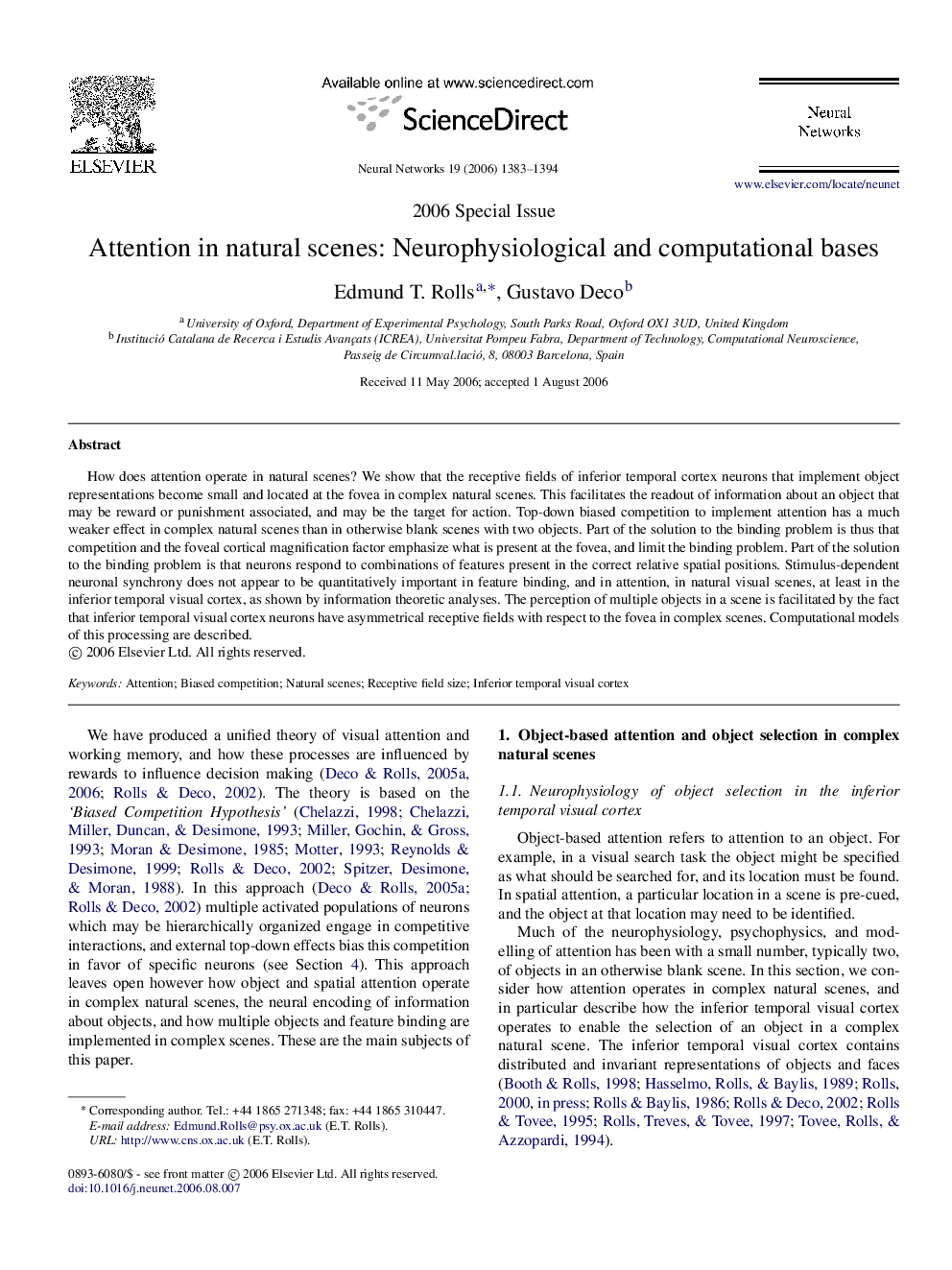| Article ID | Journal | Published Year | Pages | File Type |
|---|---|---|---|---|
| 407802 | Neural Networks | 2006 | 12 Pages |
How does attention operate in natural scenes? We show that the receptive fields of inferior temporal cortex neurons that implement object representations become small and located at the fovea in complex natural scenes. This facilitates the readout of information about an object that may be reward or punishment associated, and may be the target for action. Top-down biased competition to implement attention has a much weaker effect in complex natural scenes than in otherwise blank scenes with two objects. Part of the solution to the binding problem is thus that competition and the foveal cortical magnification factor emphasize what is present at the fovea, and limit the binding problem. Part of the solution to the binding problem is that neurons respond to combinations of features present in the correct relative spatial positions. Stimulus-dependent neuronal synchrony does not appear to be quantitatively important in feature binding, and in attention, in natural visual scenes, at least in the inferior temporal visual cortex, as shown by information theoretic analyses. The perception of multiple objects in a scene is facilitated by the fact that inferior temporal visual cortex neurons have asymmetrical receptive fields with respect to the fovea in complex scenes. Computational models of this processing are described.
